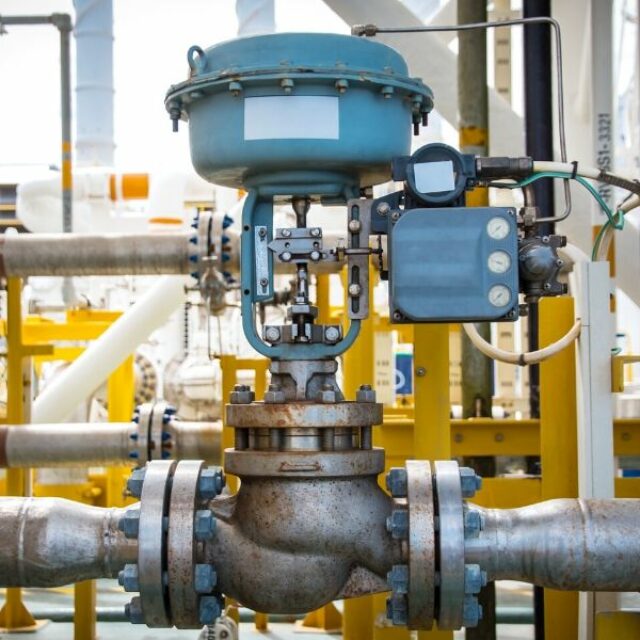Enhancing Functional Effectiveness with Advanced Control Valves
Enhancing Functional Effectiveness with Advanced Control Valves
Blog Article

Maximize Power Financial Savings and Comfort With Advanced Structure Automation Controls
In the realm of modern design and facility management, the integration of advanced building automation regulates stands as a critical innovation. By taking advantage of the power of automation, structures can adjust, respond, and progress in methods that were once unbelievable.
Power Effectiveness Benefits
Power effectiveness advantages can dramatically reduce power intake and functional costs in structures. Energy-efficient systems, such as advanced building automation controls, can enhance the usage of sources like home heating, illumination, and cooling, leading to lower power expenses over time.
In addition, enhanced energy performance can prolong the life-span of structure equipment and systems. By running much more effectively, a/c systems, lighting fixtures, and various other structure parts experience less wear and tear, leading to lowered maintenance and replacement prices. Additionally, energy-efficient structures usually command higher residential property worths and rental rates, supplying long-term monetary advantages to owners.
In addition, power effectiveness can enhance owner comfort and efficiency. Correctly regulated indoor atmospheres with optimum lighting and thermal conditions develop an even more conducive and positive work area, resulting in enhanced worker fulfillment and efficiency. Generally, the energy performance benefits linked with sophisticated building automation controls are complex, including price financial savings, ecological stewardship, and occupant health.
Enhanced Convenience Control
Enhancing convenience control in structure environments needs an innovative combination of innovative automation systems for ideal owner health. By using advanced structure automation controls, centers can tailor the interior environment to fulfill the certain demands and preferences of residents. These systems make it possible for precise law of lighting, temperature, and ventilation, creating a comfortable and productive atmosphere. Occupant fulfillment and performance are closely linked to thermal comfort, making it important to have systems in position that can adjust to changing conditions in real-time.
By integrating these sophisticated controls, buildings can not just boost comfort but likewise improve energy performance by optimizing system procedures based on actual occupancy and use patterns. Inevitably, focusing on occupant comfort via sophisticated automation systems leads to a more satisfying and much healthier interior environment.
Operational Performance Improvements

Moreover, the execution of real-time tracking and analytics tools allows building operators to recognize power inefficiencies and operational anomalies promptly. By constantly monitoring energy usage patterns and system efficiency metrics, modifications can be made in real-time to maximize power intake and make certain peak operational efficiency. control valves. Furthermore, including need reaction strategies into structure automation controls can even more improve functional effectiveness by dynamically changing energy usage based on grid conditions and pricing signals
Indoor Environment Optimization
Reliable interior environment optimization is a basic facet of building automation controls, guaranteeing occupants' comfort and health while taking full advantage of energy financial savings. By making use of advanced sensors and controls, building automation systems can continuously keep track of and change temperature level, humidity levels, air top quality, and air flow to produce an optimal interior environment. Preserving consistent and comfy problems not just boosts resident complete satisfaction but additionally boosts efficiency and overall health.
Interior climate optimization likewise plays a vital role in power efficiency. By fine-tuning air flow, home heating, and air conditioning systems based on real-time data and occupancy patterns, constructing automation controls can considerably reduce energy consumption - control valves. For circumstances, applying techniques such as demand-controlled ventilation and thermal zoning can help decrease power waste while ensuring that each area of the structure obtains the necessary conditioning.

Sustainable Setting Production
Building automation regulates not only optimize interior climate problems for power performance and occupant comfort however also lay the structure for developing a sustainable environment via calculated management of sources and systems. By integrating advanced structure automation modern technologies, such as sensing units, actuators, and intelligent software program, facilities can change and keep an eye on power use in real-time to decrease waste and lower their carbon impact. These systems allow predictive maintenance, recognizing prospective issues prior to they escalate and enhancing tools performance to improve long life and efficiency.
In addition, sustainable environment development prolongs past power monitoring to encompass water conservation, waste reduction, and interior air high quality renovation. Structure automation controls can regulate water usage, find leaks, and guarantee correct waste disposal methods, adding to total sustainability efforts. In addition, by managing and monitoring air flow and filtering systems, these modern technologies boost passenger health and performance while lowering power consumption related to a/c procedures.
Final Thought
Finally, advanced structure automation controls deal considerable advantages in regards to power savings, comfort control, functional performance, indoor climate optimization, and producing a sustainable setting. By carrying out these controls, structures can achieve optimal efficiency while reducing power usage and enhancing resident convenience. It is evident that the use of advanced automation innovation is essential in improving structure efficiency and creating a more lasting future.
Power linked here performance benefits can dramatically minimize energy usage and functional prices in structures. In general, the power efficiency benefits associated with sophisticated building automation controls are diverse, incorporating price savings, environmental stewardship, and occupant health.
Furthermore, incorporating need feedback techniques right into structure automation controls can better enhance operational performance by dynamically readjusting energy use based on grid conditions and rates signals.
Building automation controls not just maximize interior environment conditions for power performance and passenger comfort but likewise lay the my review here foundation for creating a sustainable setting through strategic management of resources and systems.In final thought, advanced structure automation manages deal substantial benefits in terms of energy savings, comfort control, functional performance, interior environment optimization, and developing a sustainable setting.
Report this page